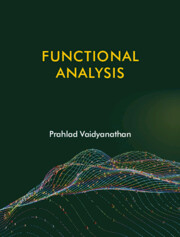3 - Hilbert Spaces
Published online by Cambridge University Press: 31 January 2025
Summary
3.1 Orthogonality
Hilbert space theory is a blend of Euclidean geometry and modern analysis. The inner product between vectors affords us the notion of orthogonality. This gives us access to geometric ideas such as Pythagoras’ Theorem (yes, really) and a best approximation property which formalizes the idea of ‘dropping a perpendicular’. This property, together with the notion of an orthonormal basis, will lead us to discover the Fourier series of an L2 function. These ideas were originally studied in the context of integral equations and are the historical roots of all of Functional Analysis.
David Hilbert (1862–1943) is perhaps best known for the twenty-three problems he posed in the International Congress of Mathematicians (ICM) in Paris in 1900. These problems speak to the incredible range of knowledge that Hilbert possessed and have been important signposts for mathematics in the 20th century. The Paris address was sandwiched between his immense work on axiomatizing geometry (published in 1899) and hiswork on integral equations (1904–1910) which laid the foundations for modern analysis. His mentorship of extraordinary students, including Hermann Weyl, Ernst Zermelo, Max Dehn, and many others, has only enriched his mathematical legacy.
We begin with some definitions and notation. Throughout this section, we will use the letter H to denote a Hilbert space and 〈·, ·〉 to denote the inner product on H.
- Type
- Chapter
- Information
- Functional Analysis , pp. 71 - 110Publisher: Cambridge University PressPrint publication year: 2023

